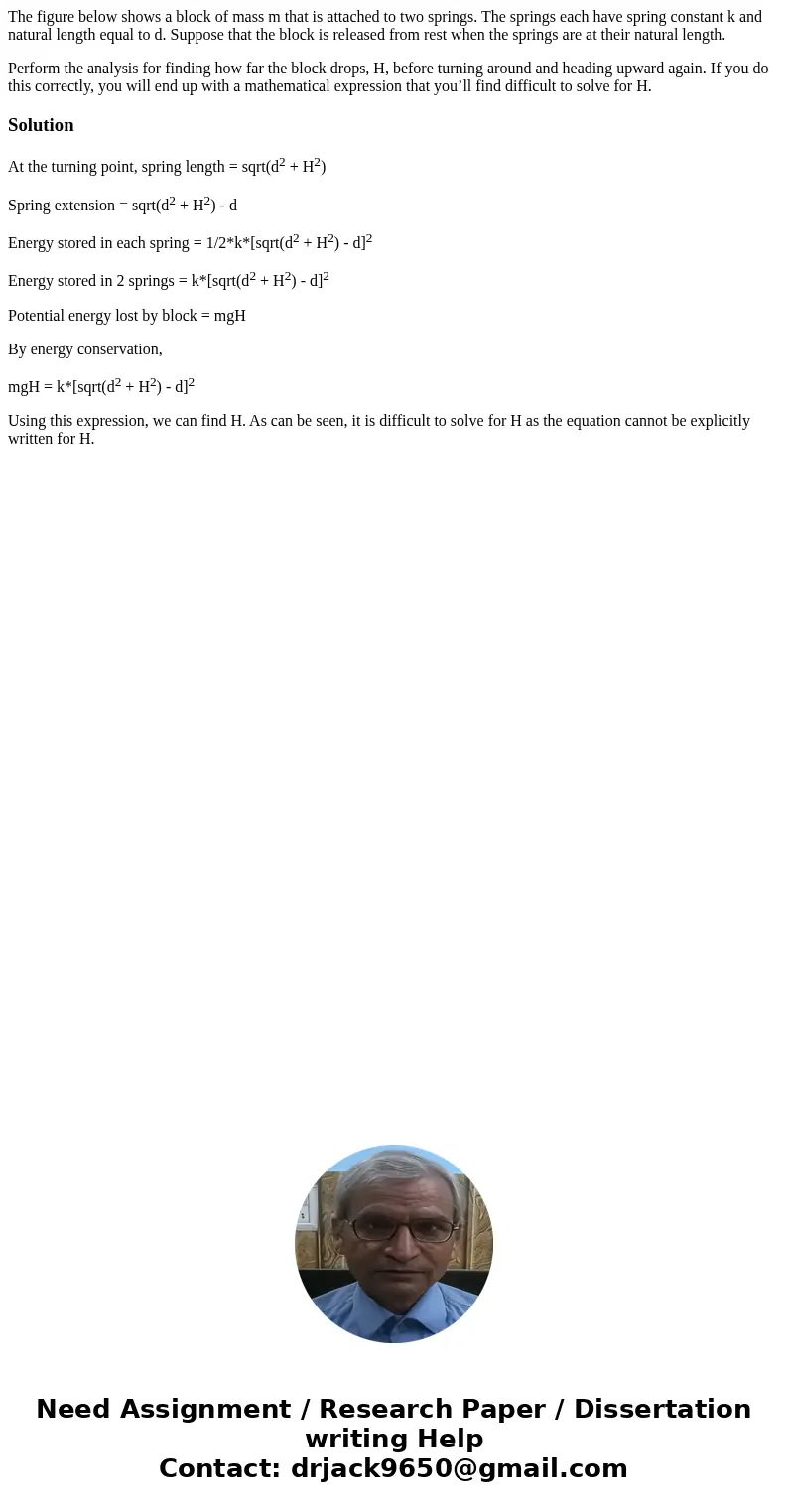The figure below shows a block of mass m that is attached to
The figure below shows a block of mass m that is attached to two springs. The springs each have spring constant k and natural length equal to d. Suppose that the block is released from rest when the springs are at their natural length.
Perform the analysis for finding how far the block drops, H, before turning around and heading upward again. If you do this correctly, you will end up with a mathematical expression that you’ll find difficult to solve for H.
Solution
At the turning point, spring length = sqrt(d2 + H2)
Spring extension = sqrt(d2 + H2) - d
Energy stored in each spring = 1/2*k*[sqrt(d2 + H2) - d]2
Energy stored in 2 springs = k*[sqrt(d2 + H2) - d]2
Potential energy lost by block = mgH
By energy conservation,
mgH = k*[sqrt(d2 + H2) - d]2
Using this expression, we can find H. As can be seen, it is difficult to solve for H as the equation cannot be explicitly written for H.

 Homework Sourse
Homework Sourse